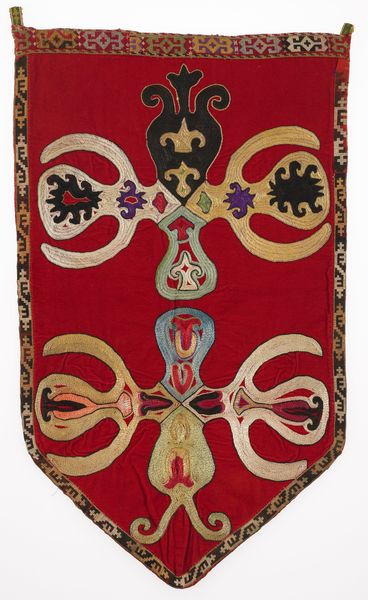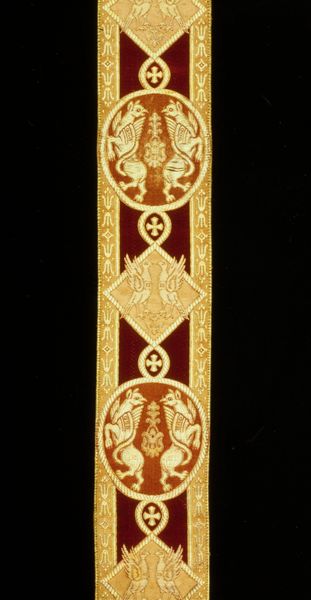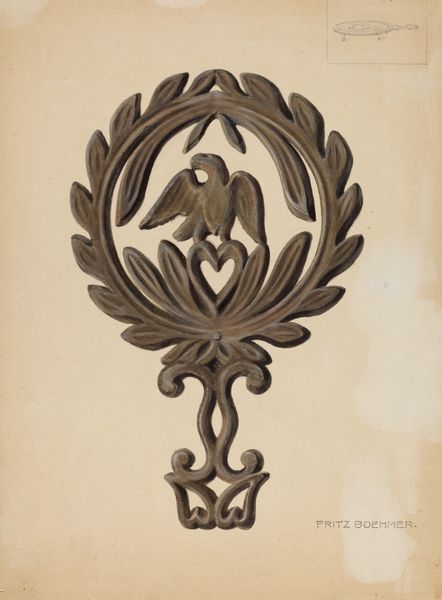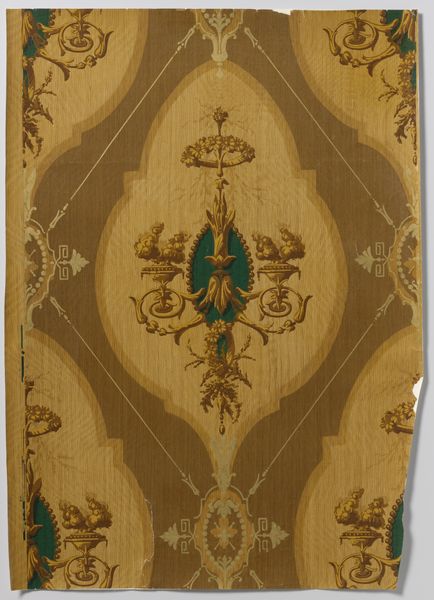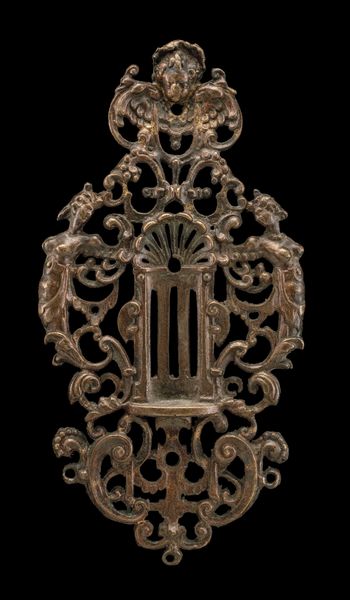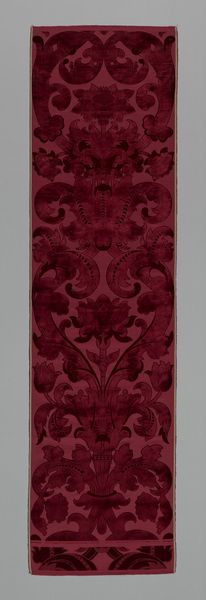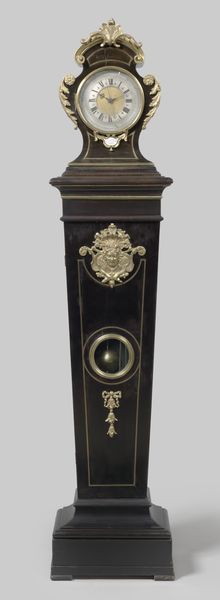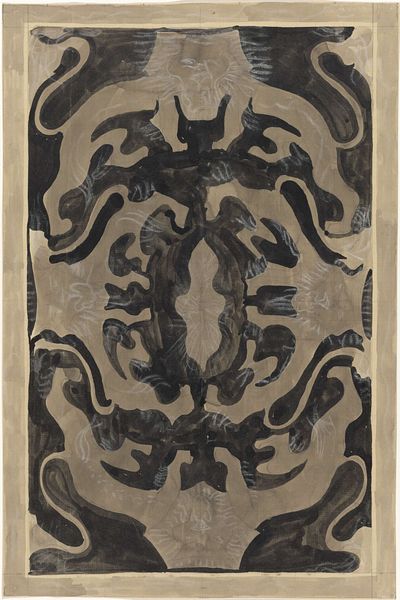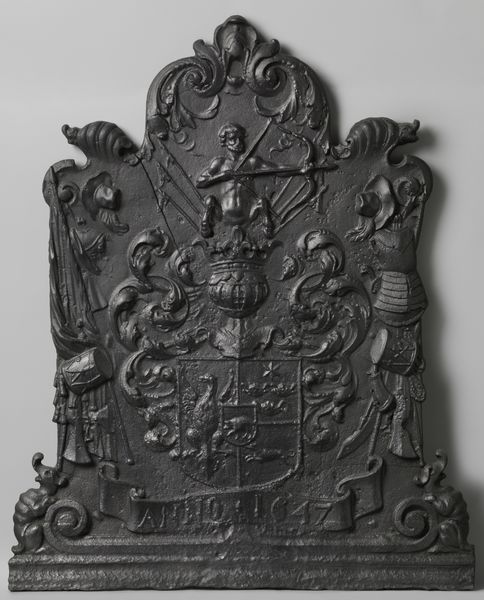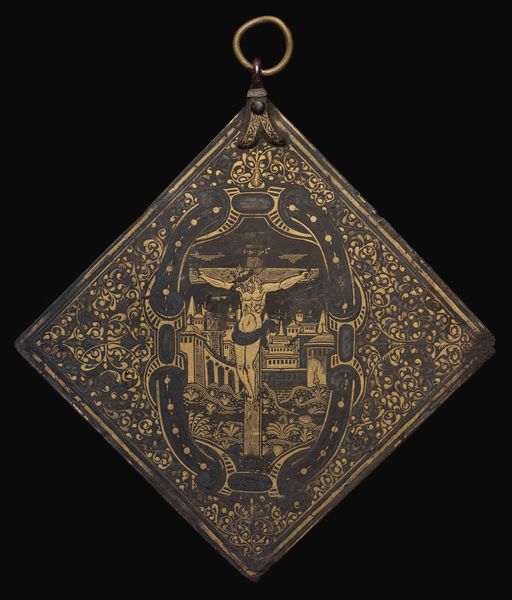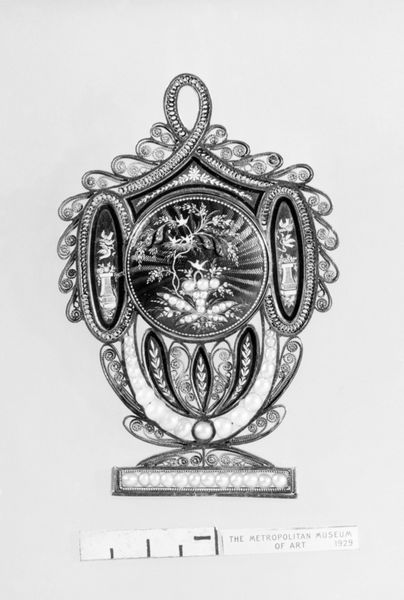
Rugdeel behorend bij troonzetel van koning Willem II, Willem III en Wilhelmina 1842 - 1849
0:00
0:00
Dimensions: length 88 cm, width 60 cm
Copyright: Rijks Museum: Open Domain
Editor: This intriguing textile piece is a section of the rug belonging to the throne used by Kings Willem II and Willem III, as well as Queen Wilhelmina, made sometime between 1842 and 1849 by the Horrix Brothers. The symbols are making me wonder: what sort of stories could it tell? What do you make of it? Curator: Oh, I love this! It's like stepping into a historical hall of whispers, isn't it? The eye, the crown, those intertwined initials... It feels so weighty with significance, as if power itself is stitched into the very fabric. The Brothers Horrix didn’t just make something beautiful. I think they created a coded message. A message that resonates of duty, of lineage, and perhaps…of being perpetually watched. How do those symbols make *you* feel, removed from the immediate context of monarchy? Editor: It gives me a slightly unsettling feeling. Like, royalty and God watching over everyone… that makes me think, can powerful symbols also feel a bit…controlling? Curator: That's a brilliant point! The eye *can* suggest omnipresence, and the crown signifies hierarchical power. So the artists created a constant reminder to its users, to those they rule over. And I wonder about the tension between faith, power, and even a subtle suggestion of control, woven right into the place where the monarchs sat. It's really brilliant. And that burgundy velvet! So luscious! But still somehow somber? Editor: Right! Okay, that’s definitely a perspective I had not thought about. Now the rug seems to be more about keeping everything in check… Wow, fascinating! Thanks for enlightening me! Curator: My pleasure! And that's the thing about textiles—they’re tactile tapestries woven not just with threads, but also, sometimes, with agendas.
Comments
No comments
Be the first to comment and join the conversation on the ultimate creative platform.
